 |
 |
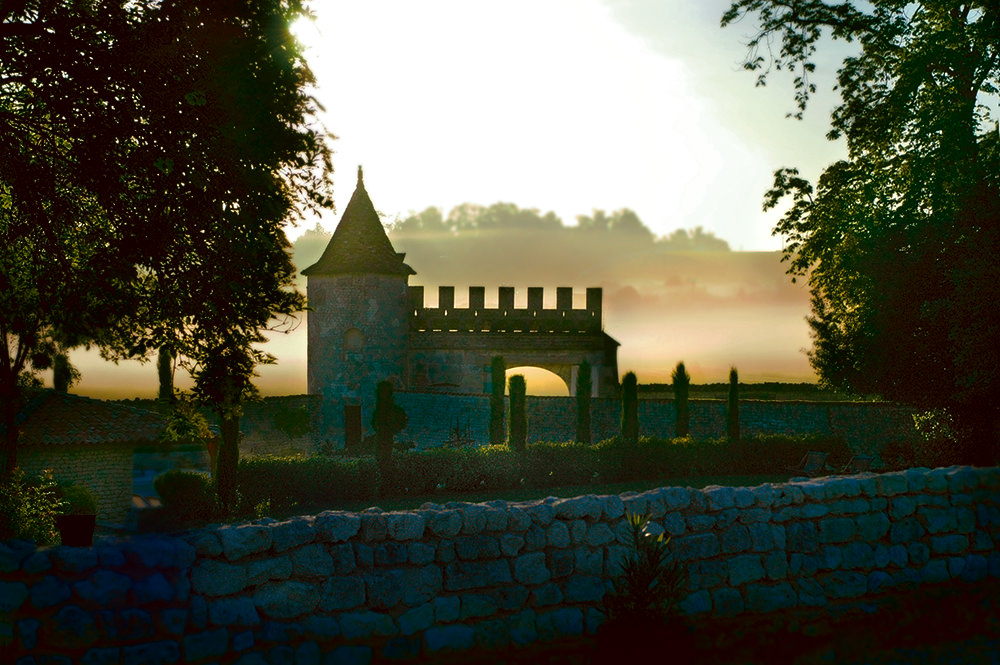 |
| ©2016 Henry McDaniel Photography |
 |
 In this land of exquisite beauty, it is said that the very best of Cognac can never be made in the lifetime of a single person. Join us as we meet with the makers, work in the vineyards, and learn the intricacies of Rémy Martin's fine Champagne Cognac. In this land of exquisite beauty, it is said that the very best of Cognac can never be made in the lifetime of a single person. Join us as we meet with the makers, work in the vineyards, and learn the intricacies of Rémy Martin's fine Champagne Cognac.
|
 |
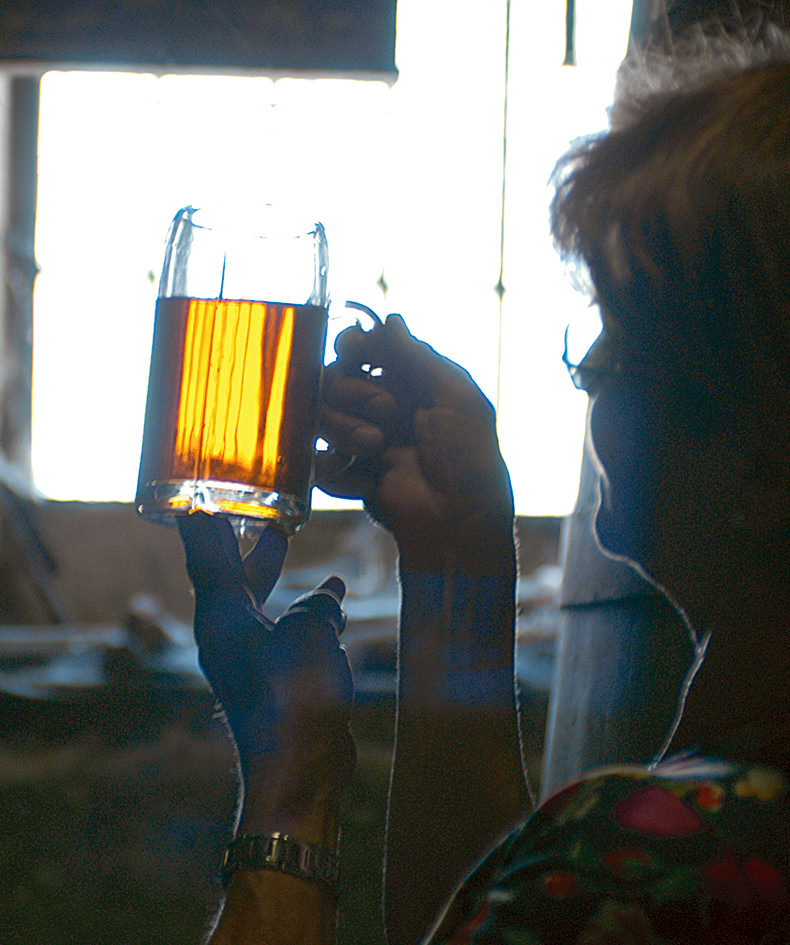 A fine but distinct line separates spirits from wine and cognac sits comfortably in the middle. "The noble spirit" is one brandy that can't be derived from just any fruit, only grapes, giving it wine-like characteristics that make it as relaxed in a flute as in a snifter, highball tumbler or cocktail glass. A fine but distinct line separates spirits from wine and cognac sits comfortably in the middle. "The noble spirit" is one brandy that can't be derived from just any fruit, only grapes, giving it wine-like characteristics that make it as relaxed in a flute as in a snifter, highball tumbler or cocktail glass.
This drink may be versatile, but it's not easy, insists Vincent Géré, Master Taster for Rémy Martin. "You must deserve cognac," he said. "You must seduce it." He speaks from an intimate knowledge of the exacting process that brings this fiery drink to the decanter. Cognac must legally come from Cognac; specifically, the grapes grown in and within 50 kilometers of the village of Cognac in southwestern France. RÉMY MARTIN'S COLLECTION 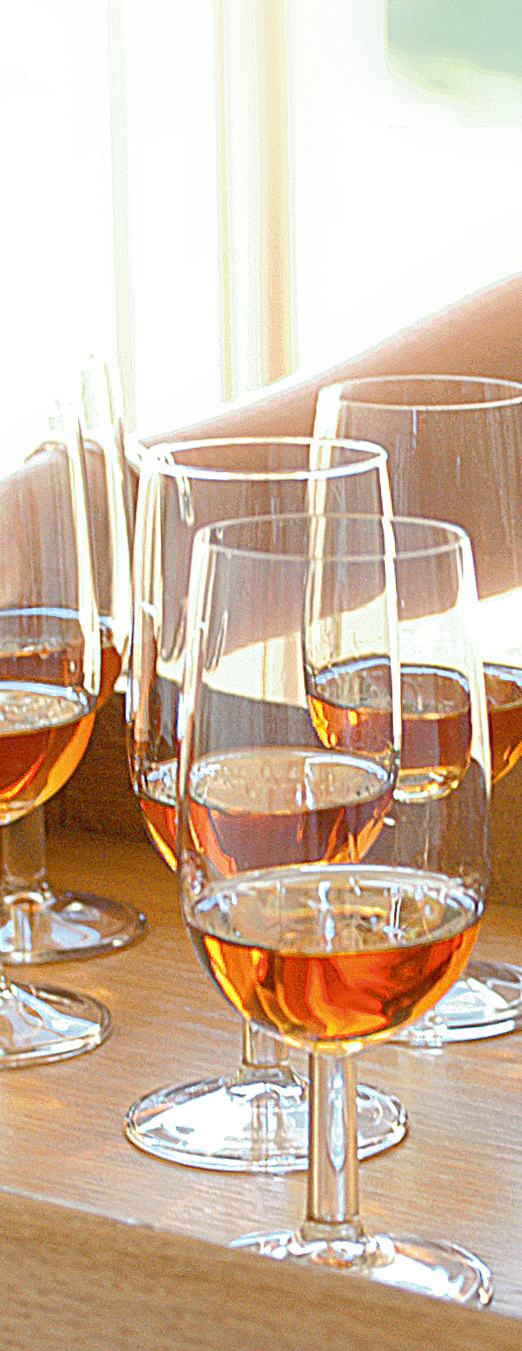 Grand Cru Soft and fresh, with a bouquet of lime blossom, apple, bush peach and mint. A great mixer. Grand Cru Soft and fresh, with a bouquet of lime blossom, apple, bush peach and mint. A great mixer.V.S.O.P Golden yellow with traces of rose, apricot jam and hazelnut. Rémy Martin's flagship. 1738 Accord Royal A mellow yet powerful taste of clove, candied orange and brioche. X.O. Excellence A velvety blend with top notes of jasmine and iris and the aromatic heart of a fig. Extra Mahogany-hued and refined, with traces of jasmine, curry and saffron. Louis XIII The ultimate Rémy Martin made from eaux-de-vie over a century old and aged in its own cellar. A red-tinted dark gold drink with a complex flavor of narcissus, jasmine and passion fruit and a one hour finish. 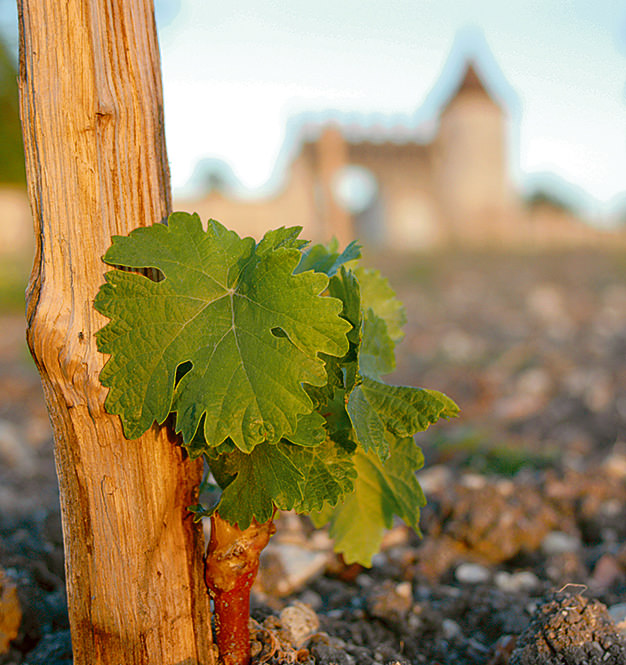 Surrounded by the Charente River, the Cognac area encompasses six regions perfectly suited to growing their own subtly different variations of the fruit that makes the drink. Surrounded by the Charente River, the Cognac area encompasses six regions perfectly suited to growing their own subtly different variations of the fruit that makes the drink.
 Drafts of the Gulf Stream that sustain palm trees alongside pines here keep the vines warm and the chalk found in the rich soil reflect light to ripen the grapes. (This dirt shares nearly identical composition with the champagne vineyards east of Paris; "Champagne" means "chalky field.")
The soil sample picture left shows how the shallow, nutrient-rich dirt quickly gives way to water-filtering rock, creating perfect growing conditions for grape vines. Drafts of the Gulf Stream that sustain palm trees alongside pines here keep the vines warm and the chalk found in the rich soil reflect light to ripen the grapes. (This dirt shares nearly identical composition with the champagne vineyards east of Paris; "Champagne" means "chalky field.")
The soil sample picture left shows how the shallow, nutrient-rich dirt quickly gives way to water-filtering rock, creating perfect growing conditions for grape vines.
|
 |
| In the latter half of the 16th century, British and Irish cognac makers set up shop along the banks of the Charente. They developed their "liquid gold" with maritime trade in mind: brandies not only traveled lighter and longer than wine in Dutch ships, they also improved with age over long voyages. |
 |
| The cognac of Cognac had already grown famous by the time Rémy Martin joined the field in 1724, but his cognac soon won a devoted following that his house has maintained nearly three centuries. Of the 300 cognac houses now operating in and around Cognac, Rémy Martin continues to stand out with its beloved line. |
 |
| "Taste is at the heart of everything we do," says Mme. Dominique Hériard Dubreuil, President of Rémy Martin. "Rémy Martin is about ideals and tradition; about passion and patience; about giving decades the time to work their magic." |
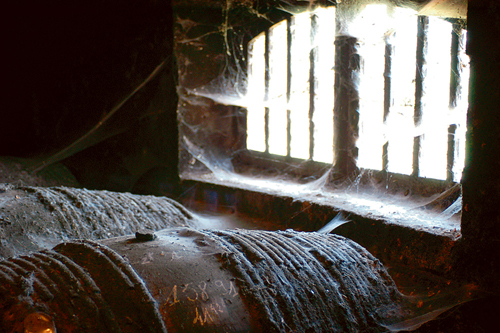 |
| Rémy Martin has perfected its own special version of the unique and time-honored process that gives life to cognac. Each October,the company harvests three types of grapes - Colombard, Folle Blanche, Ugni Blanc - from independent growers in the premier crus (growth districts) of Charente, the Grande Champagne and Petite Champagne. Pressed the traditional way in a large-bore press, the fruit ferments five to seven days. |
"It's the delicate combination of sun, soil, rain and pride that drives our community of independent growers to make the cognac we love so much." |
| The "raw" wine that results stays on its lees (sediment) to assure more body and longer-lasting flavor. The next phase of the cognac's life, the distillation, begins in the boiler, where a swan-neck pipe captures the vapors of the heated wine and passes the brouillis distillate into a copper still. |
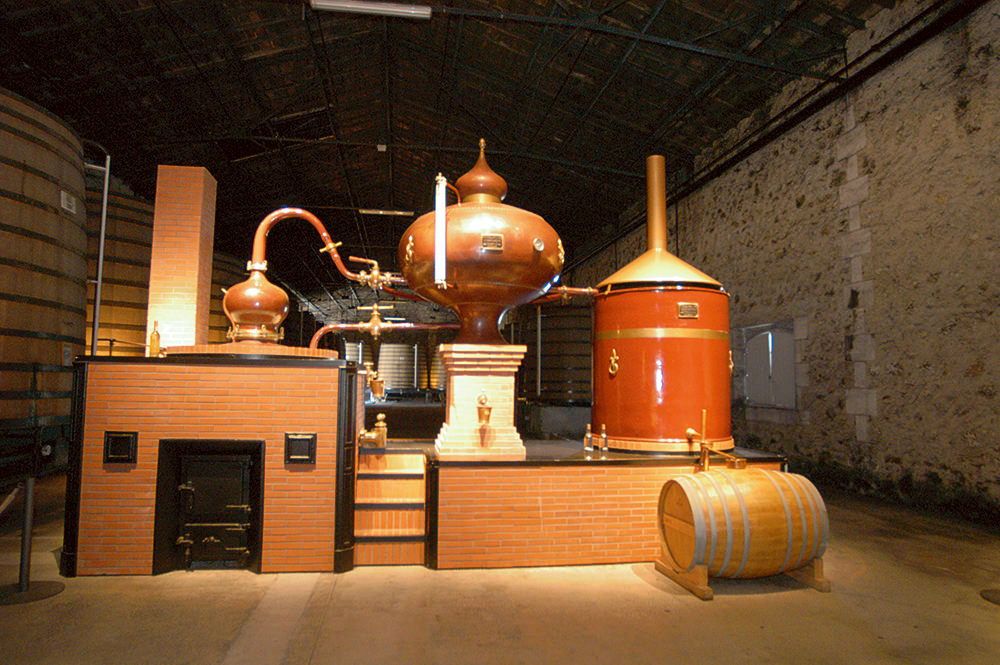 |
Rémy Martin uses smaller stills (no larger than 25 hectoliters) than most cognac makers to better distribute heat and create the kind of intimate contact between copper and liquid that bring out the best flavors and aromas. The process starts all over again when Rémy Martin distills the brouillis a second time to create the beating heart of cognac, the clear liquid known as eaux-de-vie, "water of life." The Cellarmaster and his assistants evaluate the taste and smell of their potent creation before casking it in porous barrels built exclusively from special 150-year-old Limousin oak. To better mingle the wood, air and eaux-de-vie into just the right combination, they may also move the cognac back and forth between new barrels, which age them quickly, and older barrels, which slow down that process. The Cellarmaster and his assistants evaluate the taste and smell of their potent creation before casking it in porous barrels built exclusively from special 150-year-old Limousin oak. To better mingle the wood, air and eaux-de-vie into just the right combination, they may also move the cognac back and forth between new barrels, which age them quickly, and older barrels, which slow down that process. |
| Eaux-de-vie in its clear, young state before aging. |
| After a time, some eaux-de-vie will be pulled and blended with others before going back in the barrel to age even longer as a complete cognac. Hundreds of blend components may come together as the Cellar Master balances the various aromas, flavors and textures into one carefully-crafted masterpiece. |
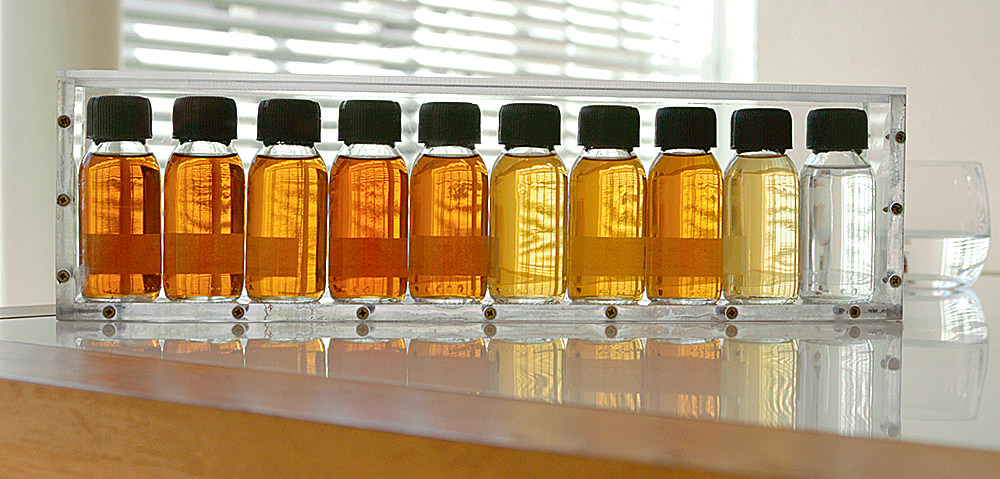 |
| Through a series of delicate transformations from still to barrel to bottle, eaux-de-vie changes from transparent distillate into the intricate amber firewater known as cognac. |
|
Throughout this storage, the cognac acquires its distinctive amber color and vanilla flavor as well as the beguiling complexity for which the drink is renowned. In an unfortunate but necessary part of this aging, large amounts of the precious liquid slowly evaporate over the years, millions of bottles-that-will-never-be which cognac makers call "the angels' share." Like people in a mannerly society, cognacs earn increasingly respectful ranks the longer they have aged. When the Cellar Master pulls a cask from the fragrant cellar, she can give it one of three legal ratings: • V.S. (Very Special) after at least 30 months two years minimum (and often used in mixed drinks and cocktails). • V.S.O.P. (Very Superior Old Pale) after four years minimum. • Napoleon or X.O. (Extra Old) after six years minimum. While the official cognac rating system doesn't go beyond eight years, many cognac makers, including Rémy Martin, mature their products much longer to create the best possible drafts for blending. |
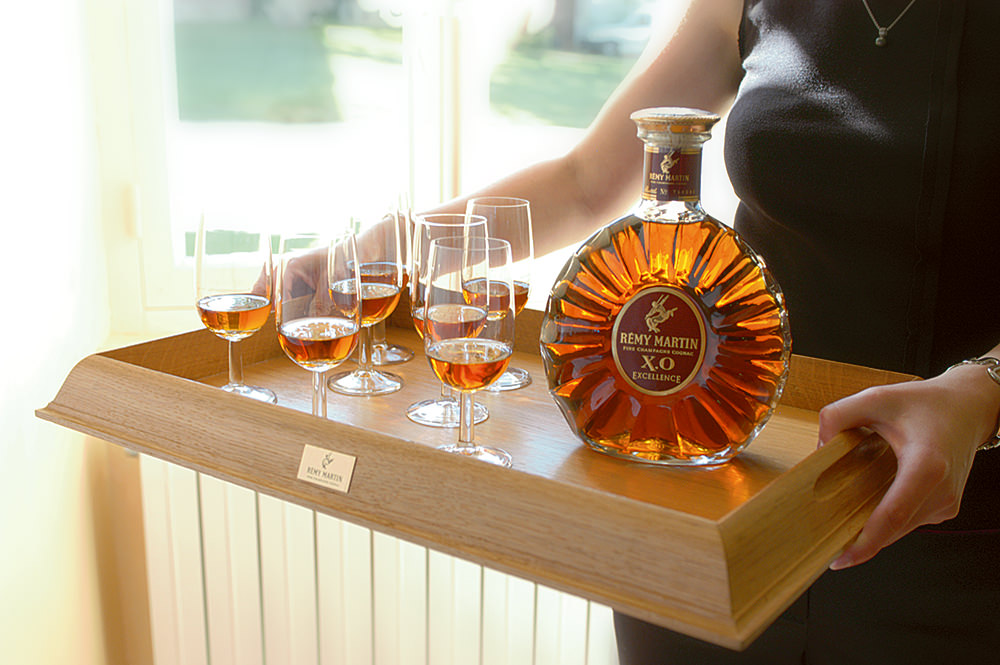 |
| Products go through rigourous taste testings by committees each and every day. |
| Once a blend is complete and ready for decanting, it receives its final tasting. Rémy Martin uses a daily tasting committee of at least four people (from a pool of 15) who have been tested and trained for two to three years. They give their opinions on the flavor, body, and finesse of each drink, an important part of what Alexander Blume, Rémy Martin's Heritage and Communication Director, calls the company's historical commitment to quality: |
| "Over the years, the people of Rémy Martin meet and cope with wars, economic depressions and Prohibition; they stare down a tiny but deadly bug and manage to scrape through some bitter winters; they recognize and grasp any good luck; they pioneer innovative and fair industrial relations, and, though conservative by nature, they never ignore the value of intuition." |
 |
| From Top Left: Church of Talmont sur Gironde - the perfect place for our midnight toast. The village of Cognac, made iconic by the drink that shares its name. A glass of Rémy Martin's Louis XIII, most coveted of its line is shared at midnight on the grounds of the church. Rémy Martin's head chef takes time out to show us some tips on cooking with cognac. |
 |
 It's hardly a burden to have to pass through Paris on the way to Cognac Country.
It's hardly a burden to have to pass through Paris on the way to Cognac Country. We even prepared for that journey by sampling cognacs at a few bistros and cafés. With only a day in Paris we decided to keep things simple, take in a few sights, and sample local foods. We arrived on May 8, Veteran's Day in France, and the old guard was out in full uniform. The Eiffel Tower is one of those iconic sites that does not disappoint in real life, especially when you stand directly under it or take in its profile from across the Seine. 
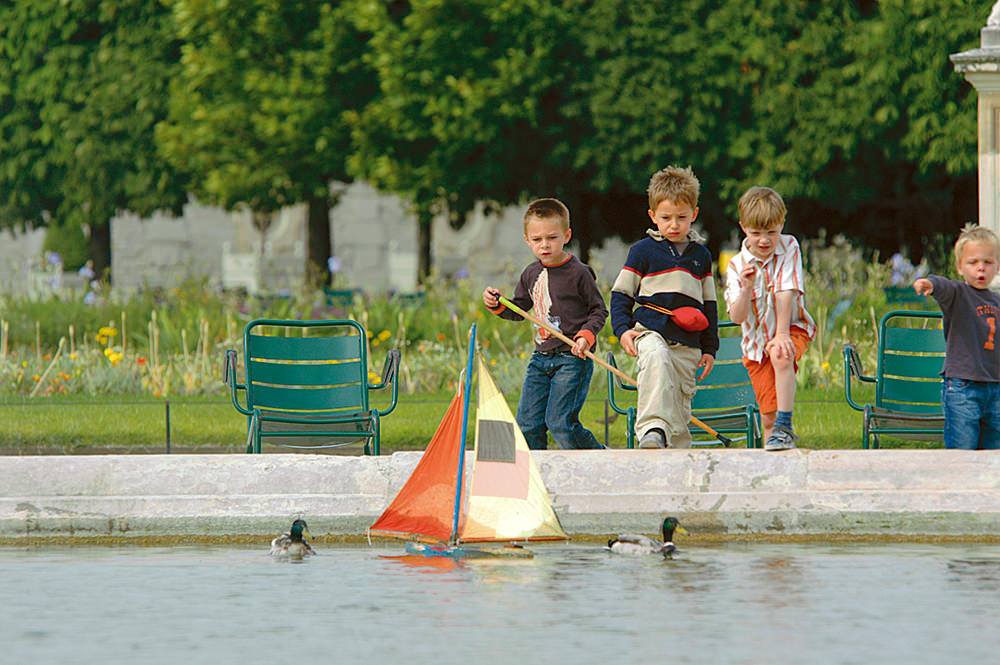
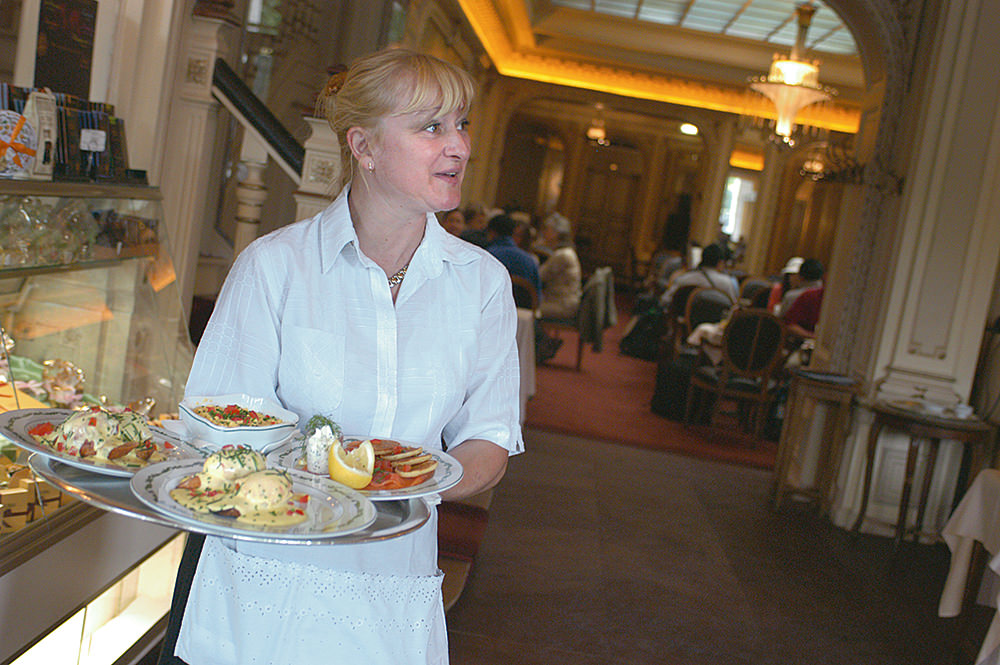 A bateau mouche cruise on the Seine is a nice, relaxing way to wile away a few hours. You can also book an evening dinner trip.
A bateau mouche cruise on the Seine is a nice, relaxing way to wile away a few hours. You can also book an evening dinner trip.Kids were out in full force with their bobbing miniature boats they sail in the Jardins du Luxembourg. |
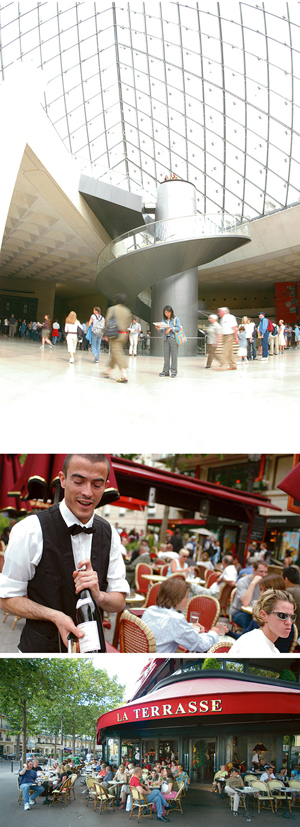 And like the kids that we are, we craved some sweets, so we walked to the nearby Angelina's, a famous Parisian destination for dining including a delicious assortment of beef dishes, pasta, fish, salads and their signature desserts.
And like the kids that we are, we craved some sweets, so we walked to the nearby Angelina's, a famous Parisian destination for dining including a delicious assortment of beef dishes, pasta, fish, salads and their signature desserts.
Fortified with a sugar high, we then hit the Louvre, beginning, as do all visitors, within I.M. Pei's glass pyramid. The vastness of the collection is beyond impressive and the several hours spent were not nearly enough to cover everything. As the afternoon began to wind down, we traveled to La Terrasse, a classic sidewalk café, where we spent the rest of the afternoon sipping, nibbling, and people-watching from a street-side table -all good practice for more café life in Cognac Country. It was only a day but what a day it was! |
| Now for a look into a classic French beef dish - Steak au Poivre. We sampled a number of recipes and settled on one that we think you'll enjoy. Plus, there's some interesting background facts and a quick tips video. Click the pic and take a look! |
 |
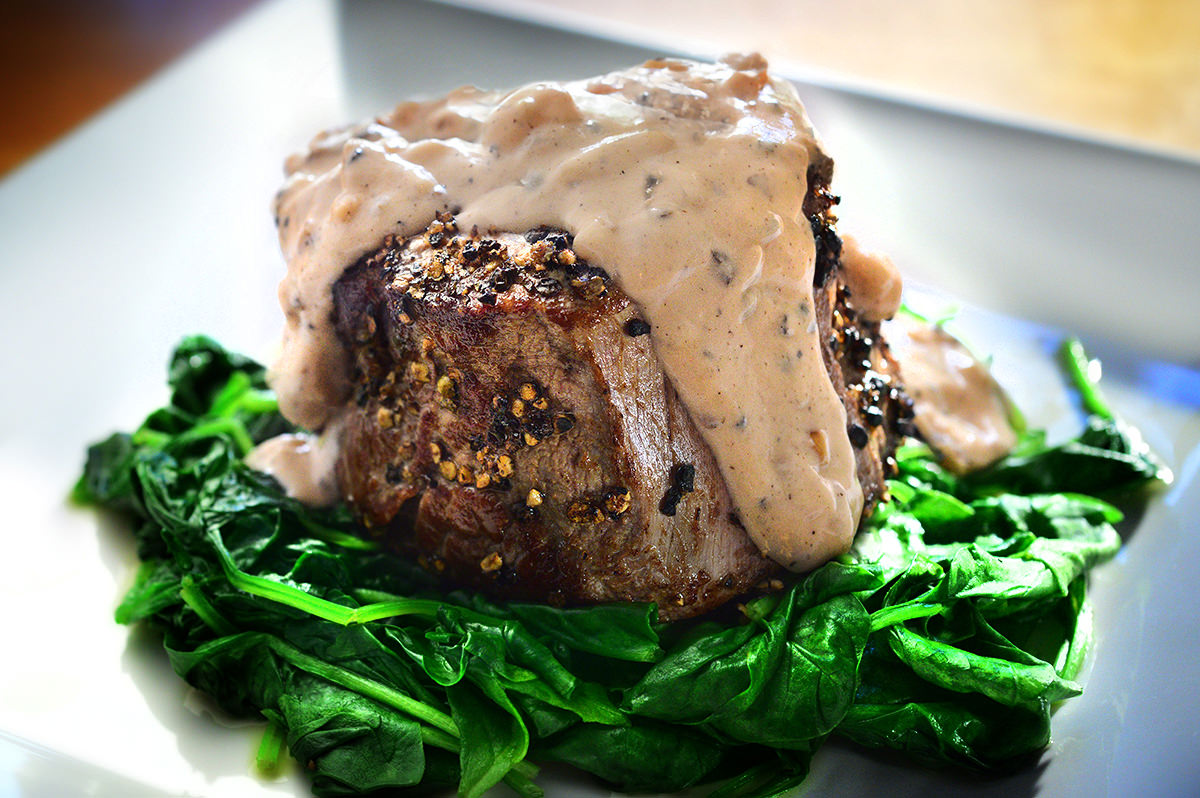 |
 |
 |
 |
| Sign up for free articles! |
 |
| See all current articles |
 |
 |
 |